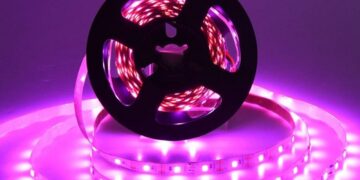Curtains are usually hung on standard window ledges (crossbars above the window). These ledges can be ceiling or wall-mounted, depending on the surface to which they are attached. In addition, cornices are classified according to the type of material, and make them today from almost everything possible. The most popular are considered to be metal, plastic, wooden ledges, as well as ledges made of a combination of these three materials.
It is believed that the ceiling curtain rails are the most common, but it is wall cornices are the traditional solution (and they are popular with designers). But the curtain rails are divided not only by the type of fastening and material. There are special types of eaves.
Everyone knows what classic curtain rods look like — it is a rod on which the hooks or rings that hold the curtain. But this is not the only type of curtain rails.
There are also stringed curtain rods. They work on a similar principle, but instead of a rod a stretched string (thin wire) is used.
But the most recent attention is paid to profile curtain rails, and the reason for this is the ability to bend them and place them in non-standard conditions and positions. For example, profile ledges can be run along the ceiling, literally embedding them in it.
Profile cornices and baguette cornices are often used by designers when they need to create a neat clean window silhouette, because the baguette cornices perfectly conceal the niche, while the profile cornices are easily disguised.
Profile rails differ from any other in that they consist of rails with hooks fixed to them.
Ceiling tracks (profiled ceiling cornices) are usually useful where curved areas, bay windows, and patio or balcony doors, that is, wherever a standard track can interfere with the closing and opening of doors, as well as where window niches are not standard.
You can control the movement of the curtains manually, or you can do it with an actuator. As a rule, it is profile ledges are equipped with electric control.
Most often the profile rails are made of aluminum, but if you want you can make rails of any other material.
If non-profile curtain rods are placed on curved areas, more often than not, custom-made metal structures are used.












